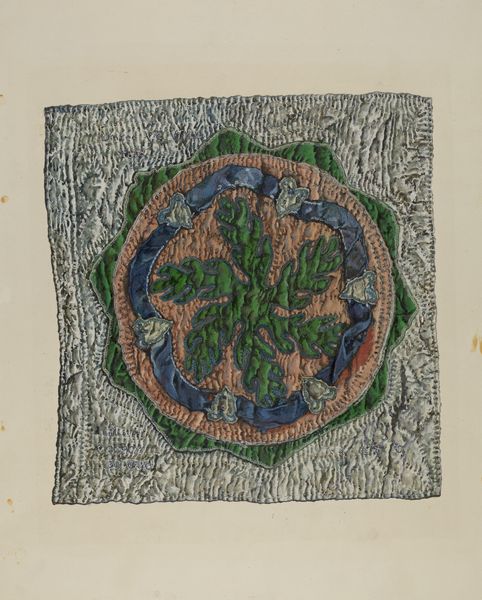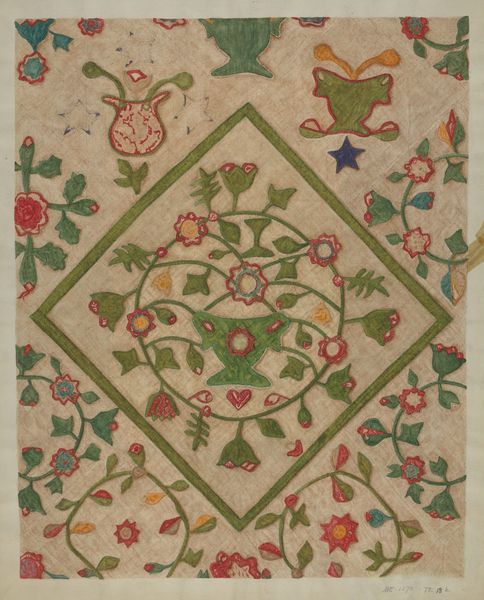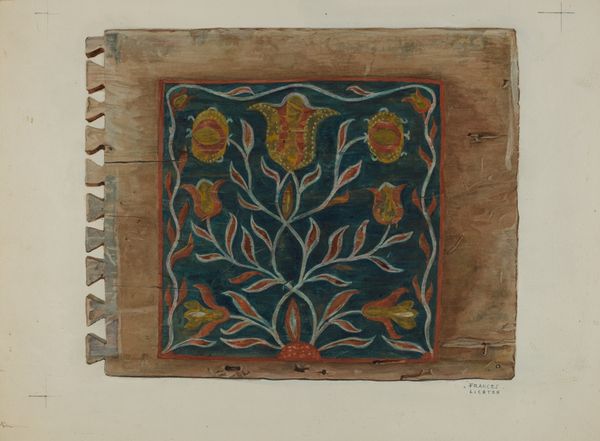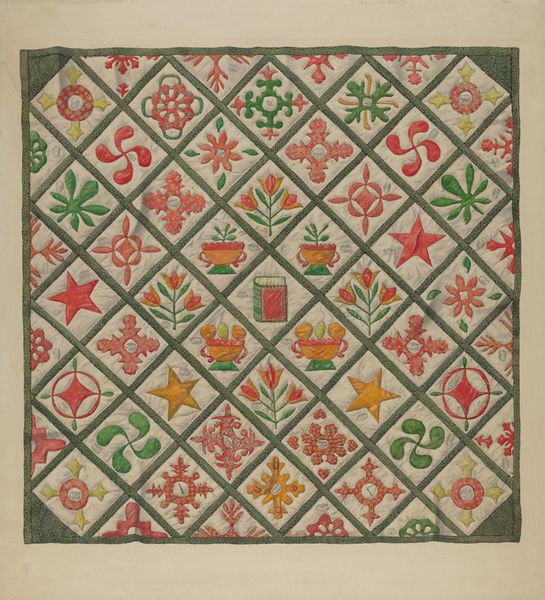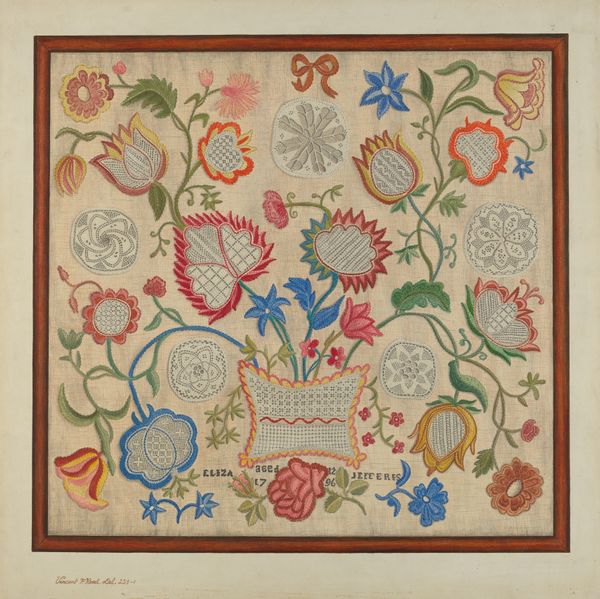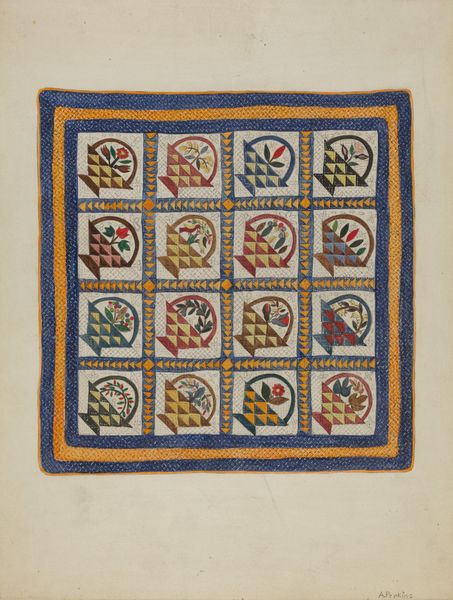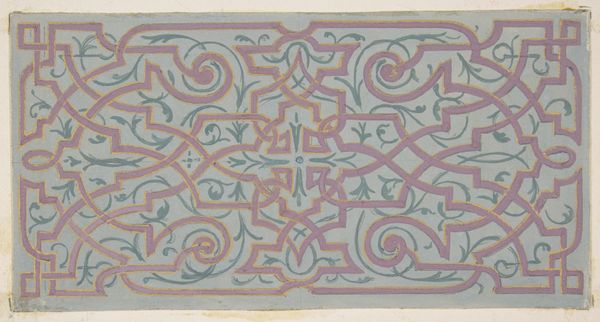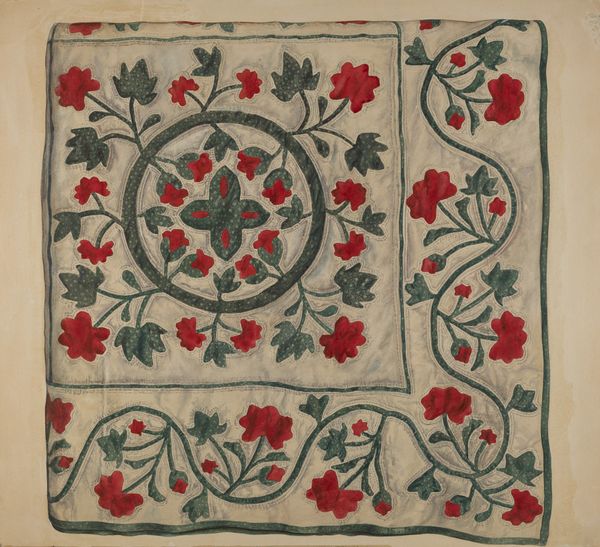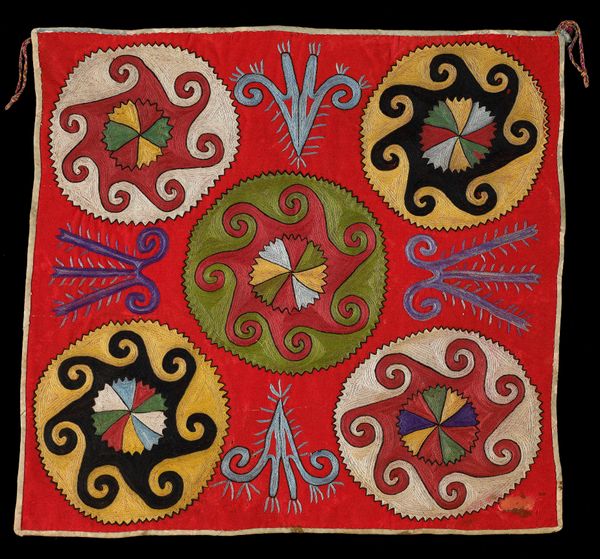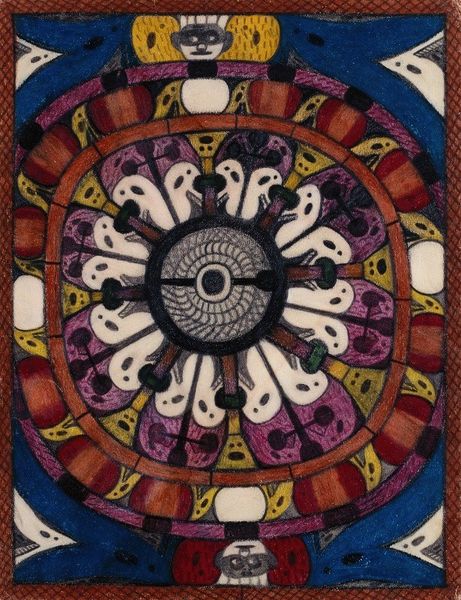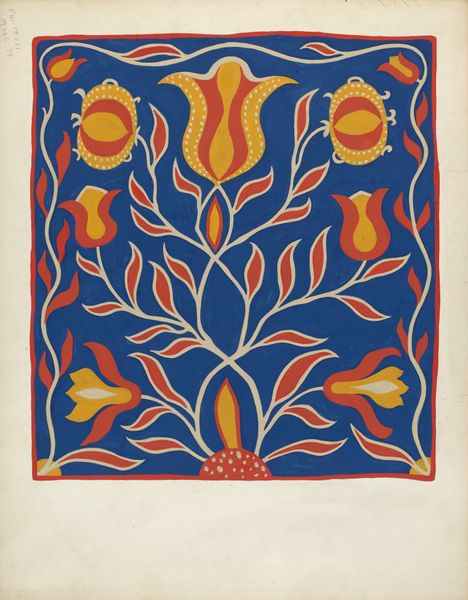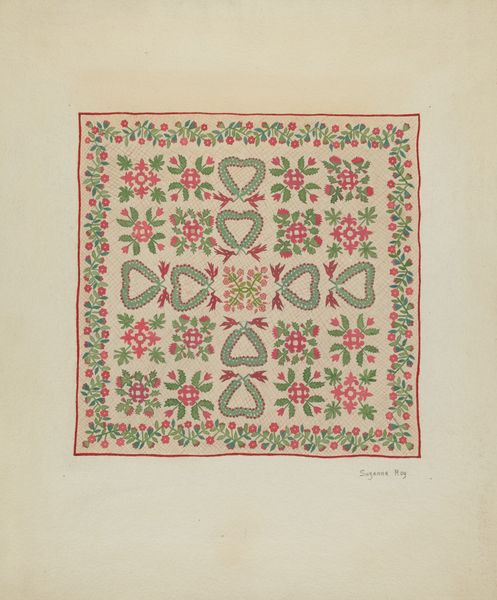
drawing
#
drawing
#
folk-art
#
geometric pattern
#
folk-art
#
organic pattern
Dimensions: overall: 40.8 x 50.7 cm (16 1/16 x 19 15/16 in.)
Copyright: National Gallery of Art: CC0 1.0
Editor: Here we have Frank Maurer’s "Pillow Top," made sometime between 1935 and 1942. It appears to be a drawing, maybe a study for a textile? There's something so comforting about the repetitive stitching motif. What stands out to you? Curator: I immediately consider the materiality and the process involved in its creation. The textile inspiration is crucial here, not just as subject matter, but as a nod to traditionally "female" crafts and their devaluation within art history. Maurer elevates this humble process through drawing, prompting questions about the division between craft and fine art. Editor: That’s fascinating! I hadn't considered the social context of the textile medium itself. What about the repeated leaf pattern and the muted colors? Curator: The organic patterns suggest a connection to the Arts and Crafts movement, where nature and handcraft were valorized against industrial production. Notice the imperfect symmetry, though. It feels handmade, resistant to the standardization of the machine age. Editor: So, it's a celebration of the handmade and natural, but through the unexpected medium of drawing? It’s interesting to think of him deliberately choosing drawing to represent textile work. Curator: Exactly! The labor involved, the careful rendering of stitch-like marks…it calls attention to the often-overlooked skill and time inherent in textile production. And look at the title: "Pillow Top." Is it a design, a suggestion, or a comment on domestic comfort during that period? What do you think? Editor: I'm starting to see the artwork less as a simple depiction of a pillow, and more as a commentary on the value and process involved in domestic work. It's making me rethink what I initially considered “comforting.” Curator: Precisely. By focusing on the means of production, on the implied labor and the social context, we can unpack the complexities hidden within this seemingly simple "Pillow Top". It questions what art *is*, how it is made, and *who* makes it.
Comments
No comments
Be the first to comment and join the conversation on the ultimate creative platform.
